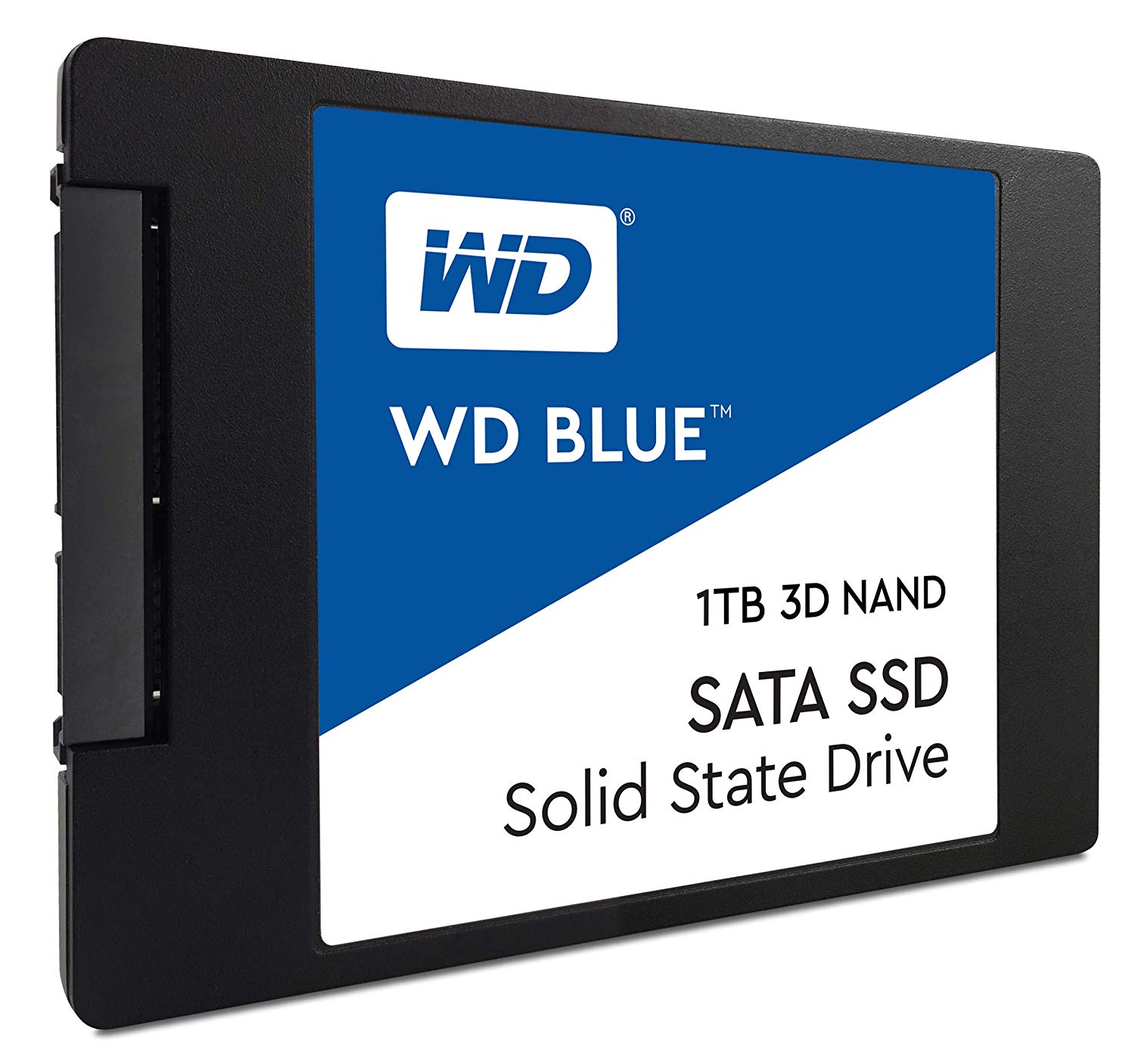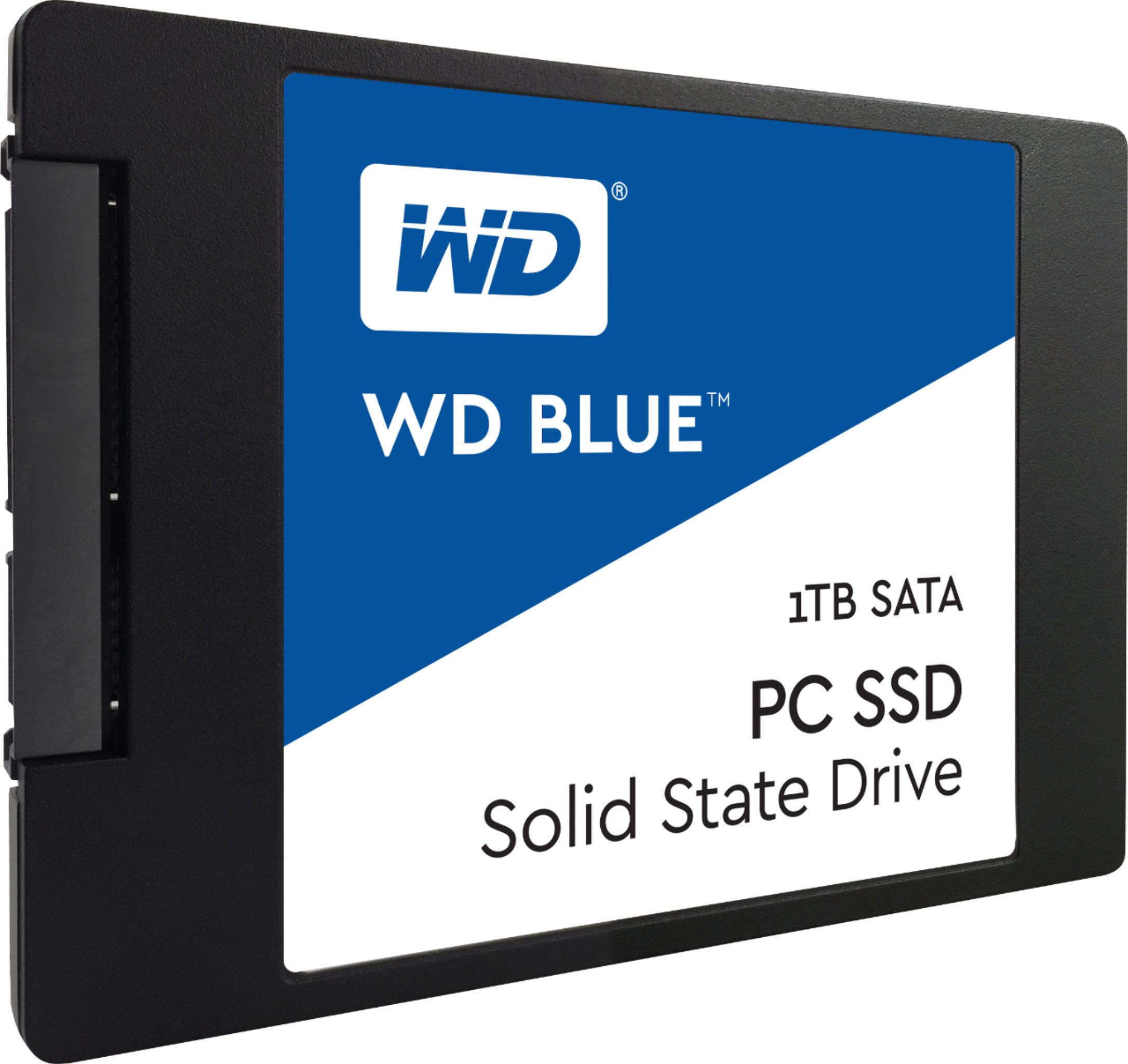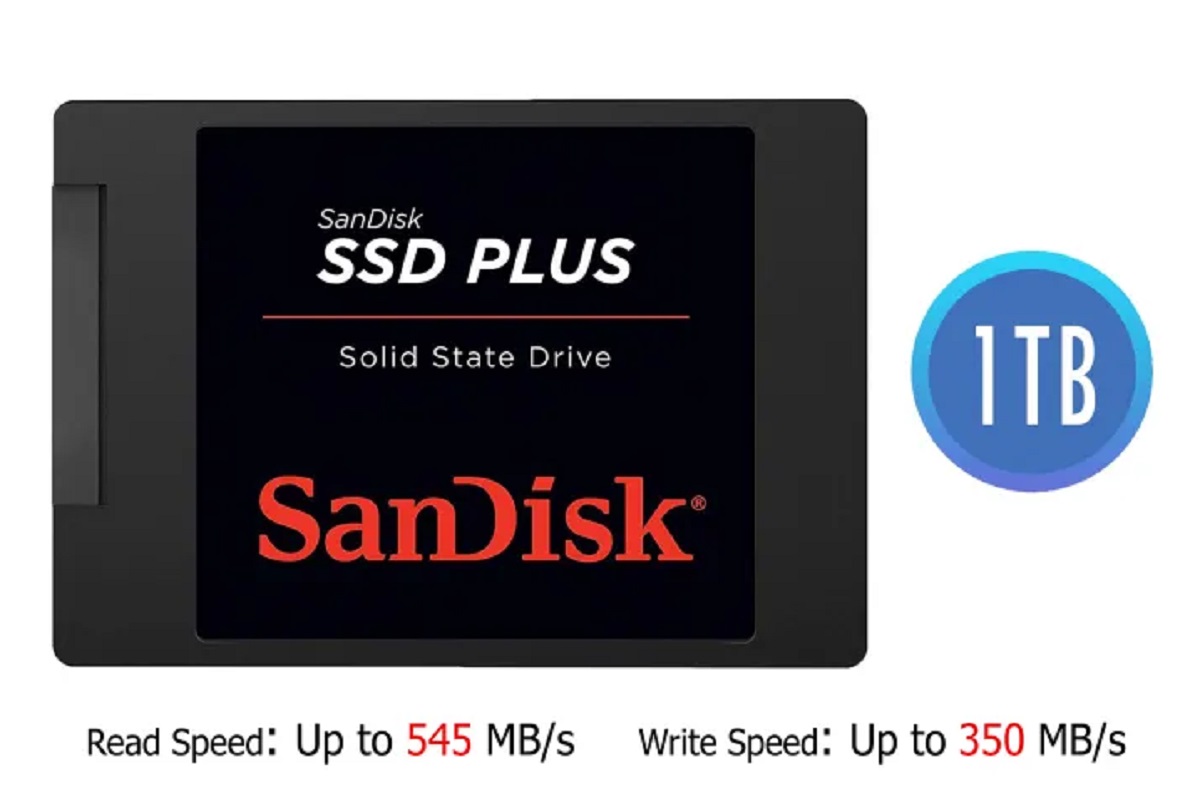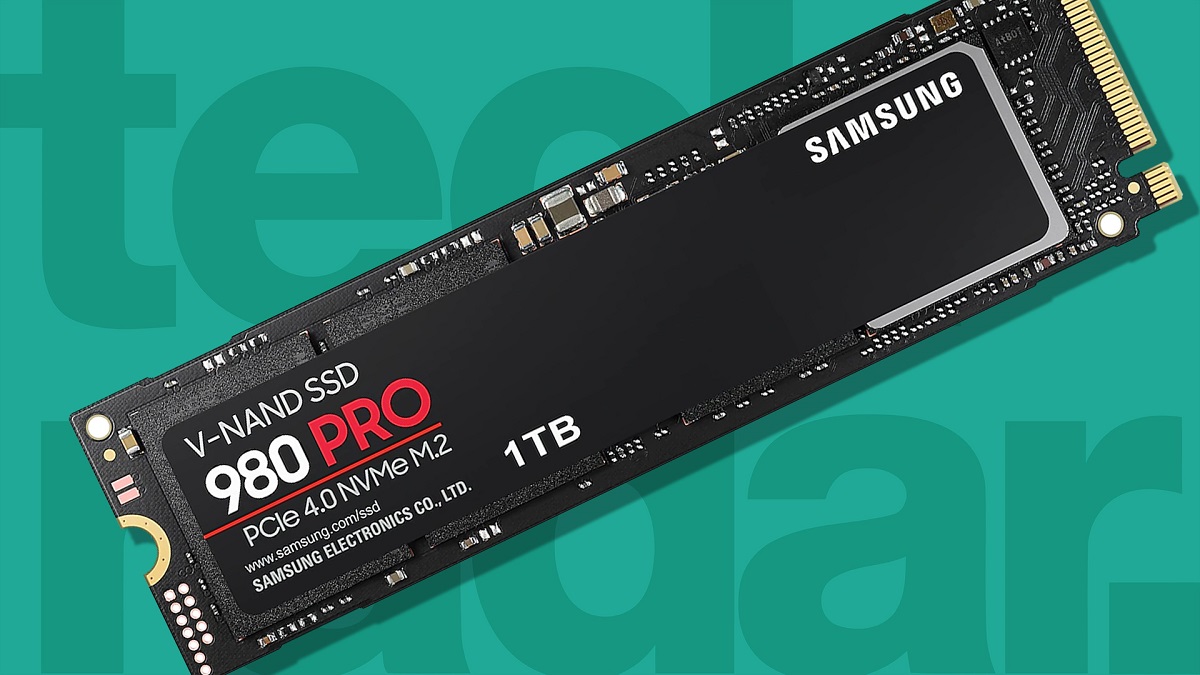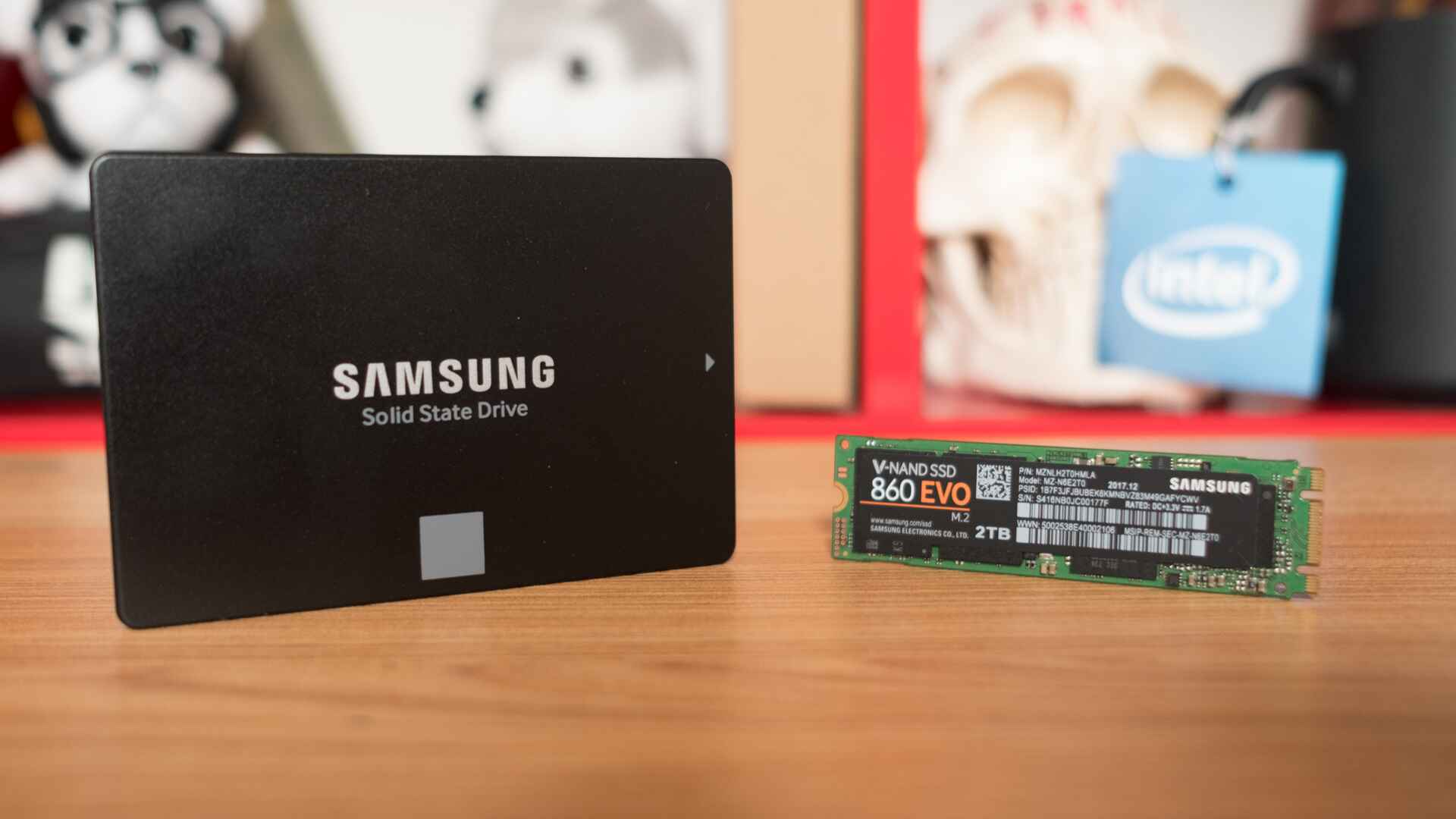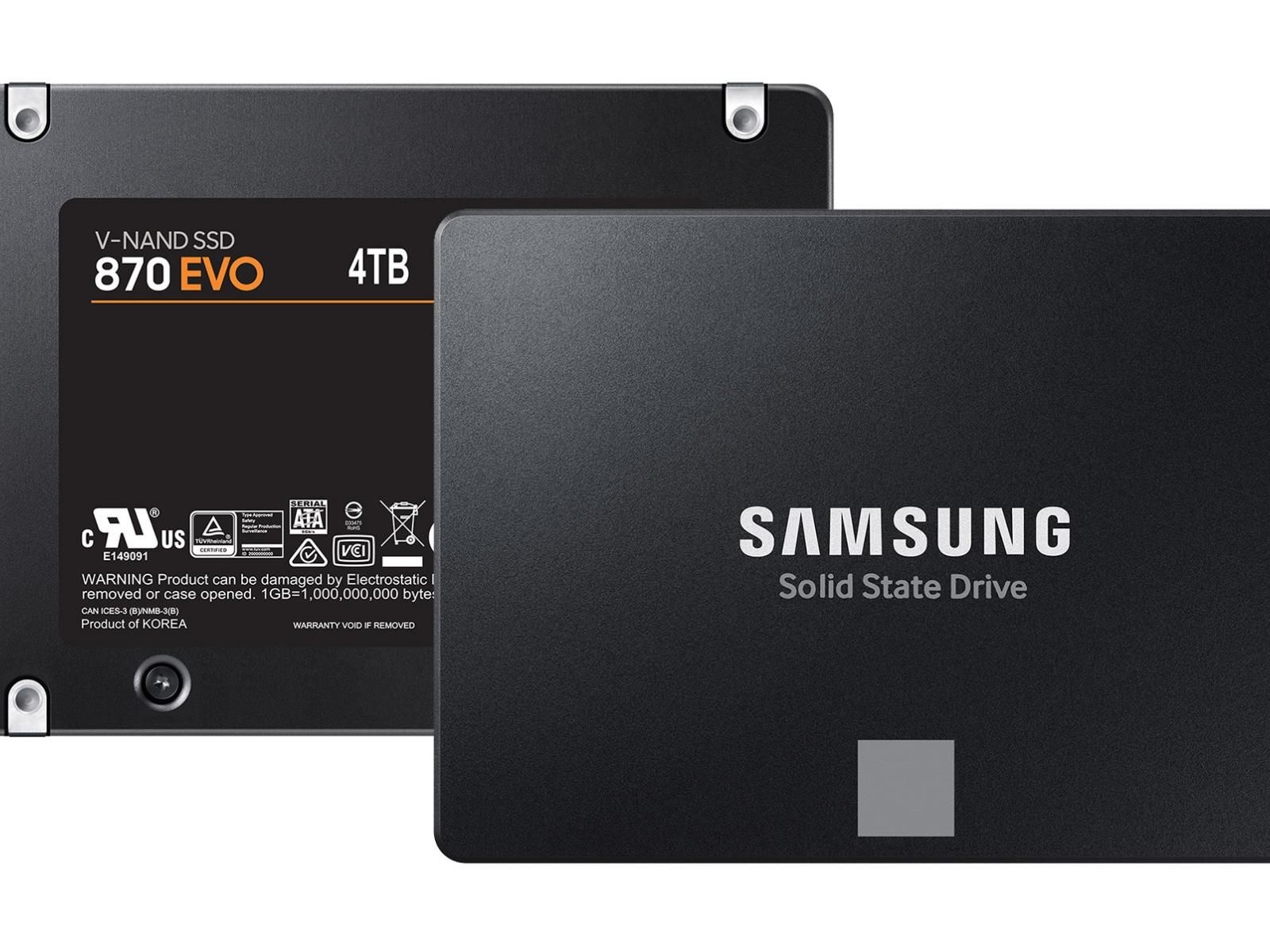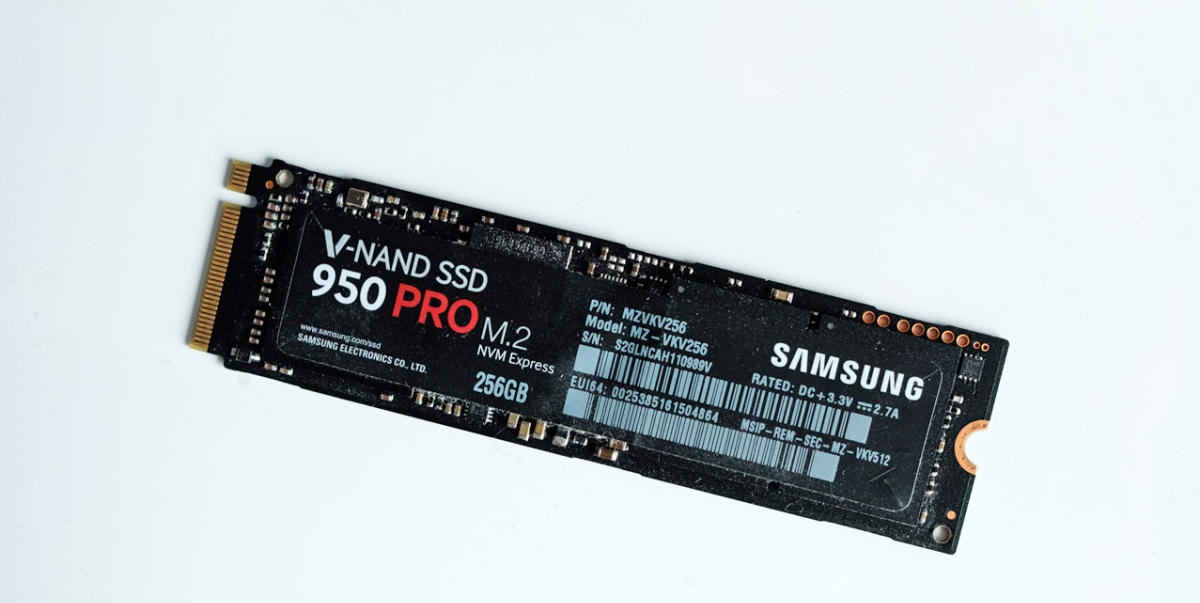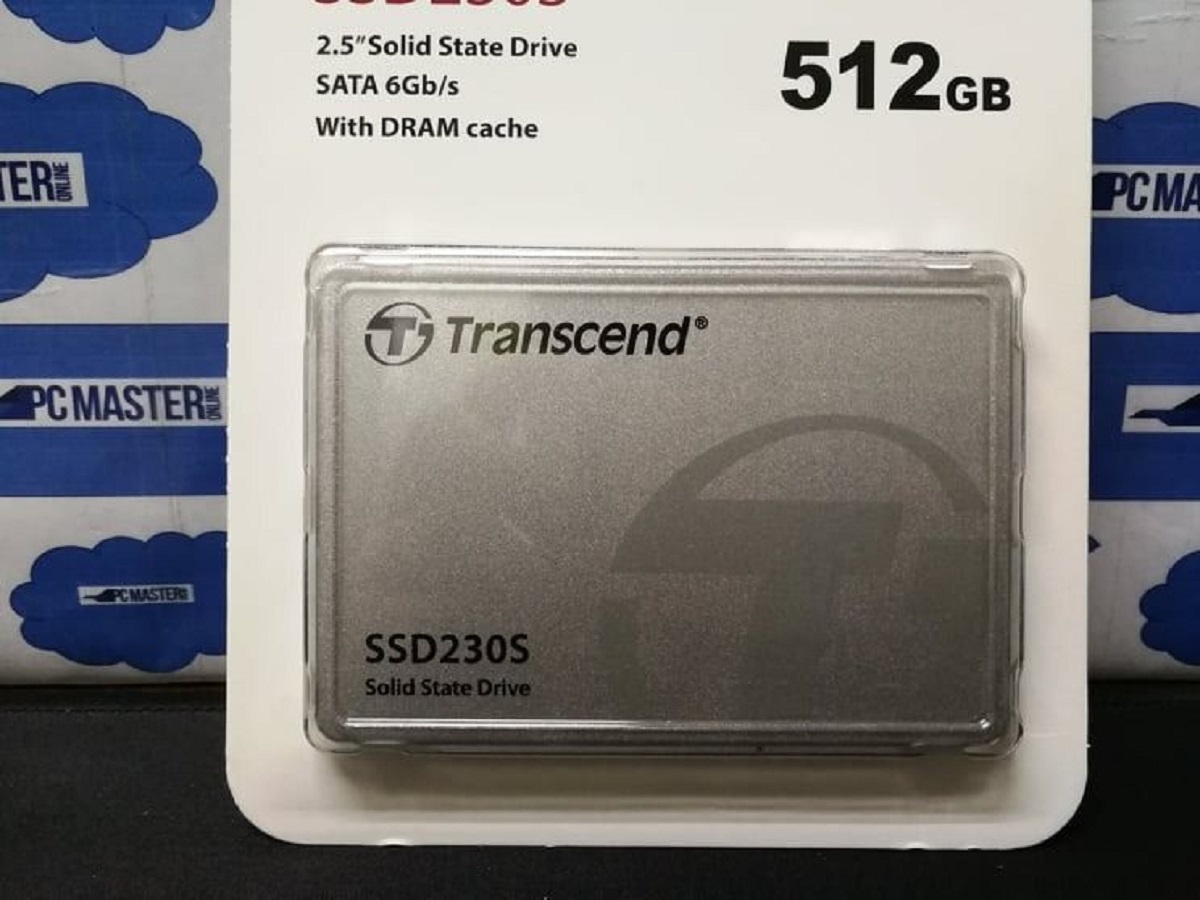Introduction
Welcome to the world of solid-state drives (SSDs) – the future of storage technology. In today’s fast-paced digital age, where data storage and accessibility are paramount, traditional hard disk drives (HDDs) are gradually being replaced by SSDs. Among the various options available, a 1TB SSD stands out as one of the most popular choices, offering a substantial amount of storage capacity with lightning-fast performance.
SSDs have revolutionized the way data is stored and accessed. Unlike HDDs that use spinning platters and mechanical parts, SSDs utilize flash memory to store data electronically. This fundamental difference results in several advantages that set SSDs apart from their HDD counterparts.
Throughout this article, we will delve into the world of 1TB SSDs, exploring their benefits, uses, considerations, and maintenance. Whether you are a tech enthusiast, a content creator, or simply someone in need of reliable storage, this guide will provide invaluable insights to help you make an informed decision.
So, what exactly is a 1TB SSD, and why should you consider investing in one? Let’s find out.
What Is a 1TB SSD?
A 1TB SSD is a solid-state drive with a storage capacity of 1 terabyte (TB). It is a storage device that utilizes NAND flash memory to store and retrieve data. With 1TB of storage space, a 1TB SSD offers ample room for storing a vast amount of files, including documents, photos, videos, games, and applications.
Unlike traditional hard disk drives (HDDs), which rely on spinning platters and read/write heads to access data, SSDs have no moving parts. This key characteristic makes SSDs faster, more durable, and less prone to mechanical failures compared to HDDs.
The primary component of a 1TB SSD is the NAND flash memory, which stores data in blocks. Each block consists of multiple cells that can hold a certain amount of information. When data is written to the SSD, the electrical charges in the cells are manipulated to represent the stored data.
Furthermore, SSDs have a controller, which serves as the brain of the drive, managing data transfer, wear leveling, error correction, and other essential functions. The controller plays a crucial role in optimizing the performance and reliability of the 1TB SSD.
Overall, a 1TB SSD offers a significant storage capacity, allowing you to store a vast amount of data, such as large multimedia files, extensive software libraries, and even operating systems. Whether you are a casual user or a professional who requires ample storage space, a 1TB SSD provides the perfect balance between capacity and performance.
Advantages of a 1TB SSD
Investing in a 1TB SSD brings forth several advantages over traditional storage options. Let’s explore some of the key benefits:
- Speed and Performance: One of the most significant advantages of a 1TB SSD is its blazing-fast speed and performance. SSDs have no mechanical parts, which eliminates the need for time-consuming spinning platters and read/write heads. As a result, data can be accessed and written much faster, resulting in reduced boot times, faster file transfers, and quicker application loading.
- Reliability and Durability: SSDs are more robust and durable compared to HDDs. Without any moving parts, they are less prone to physical damage caused by shocks, drops, or vibrations. Additionally, SSDs have a lower failure rate, making them a reliable choice for storing important data and minimizing the risk of data loss.
- Energy Efficiency: 1TB SSDs consume significantly less power compared to traditional HDDs. This energy efficiency not only translates to lower electricity bills but also reduces the strain on your device’s battery, making it an ideal choice for laptops and portable devices.
- No Noise: Since SSDs do not have any moving parts, they operate silently. Unlike HDDs, which produce noticeable spinning and clicking sounds, a 1TB SSD ensures a noise-free computing experience.
- Compact Design: SSDs are compact and lightweight, making them ideal for devices with limited physical space, such as ultrabooks and small form factor PCs. Their small size also makes them easier to transport and install.
- Shock Resistance: SSDs are designed to withstand shocks and vibrations better than HDDs. This feature makes them an excellent choice for laptops, which are more susceptible to accidental drops and bumps.
- Improved Productivity: The speed and responsiveness of a 1TB SSD can significantly enhance productivity. With faster boot times and application loading, you can get to work quickly without any frustrating delays.
- Extended Battery Life: Since SSDs consume less power, they can significantly extend the battery life of your laptop or portable device. This allows you to work, watch movies, or play games for an extended period without needing to recharge frequently.
These advantages make a 1TB SSD an excellent investment for individuals and businesses alike, enhancing both performance and reliability for a wide range of applications.
Uses and Applications of a 1TB SSD
A 1TB SSD offers a versatile storage solution with a wide range of uses and applications. Here are some of the key ways in which a 1TB SSD can be utilized:
- Personal and Professional Use: Whether you are a student, professional, or creative individual, a 1TB SSD provides ample space to store your personal and work-related files. From documents, photos, and videos to extensive software libraries and projects, you can keep all your important data in one place.
- Gaming: Gaming enthusiasts can benefit greatly from a 1TB SSD. Games today require large amounts of storage space, and an SSD can significantly reduce loading times and provide a smoother gaming experience. Additionally, having a large-capacity 1TB SSD allows you to store an extensive library of games without worrying about running out of space.
- Media Production: For content creators working with high-resolution videos, complex graphics, and large audio files, a 1TB SSD is essential. It provides a fast and reliable storage solution to manage projects, edit footage, and store a vast media library.
- Software Development: Software developers often work with large codebases, multiple frameworks, and virtual environments. With a 1TB SSD, they can maintain efficient workflows by quickly accessing their development projects, deploying software, and compiling code in less time.
- Photography and Videography: Professional photographers and videographers generate massive amounts of data. A 1TB SSD offers sufficient storage to house their extensive collection of high-resolution photos and 4K videos. Additionally, the speed of an SSD allows for faster photo editing and video rendering.
- Backup and Data Archiving: A 1TB SSD can be used as a reliable backup solution to protect your valuable data. It provides a secure and fast method to create backups of your files, ensuring that important documents, cherished memories, and critical information are safe and easily retrievable.
- Virtual Machines and Server Applications: IT professionals and system administrators can utilize a 1TB SSD to host virtual machines, run server applications, and store critical data. SSDs provide the performance and reliability required for handling multiple concurrent tasks and maintaining seamless operations.
- Enhancing Older Systems: Upgrading an older computer or laptop with a 1TB SSD can breathe new life into the system. The faster boot times, improved performance, and increased storage capacity can significantly enhance the overall user experience.
These are just a few examples of the countless uses and applications of a 1TB SSD. Regardless of your specific needs, a 1TB SSD provides the flexibility, speed, and reliability required for efficient storage and data management.
Factors to Consider before Purchasing a 1TB SSD
When choosing a 1TB SSD, it’s essential to consider several factors to ensure you make the right decision. Here are some key factors to keep in mind:
- Price: Price is an important consideration when purchasing a 1TB SSD. SSDs tend to be more expensive than traditional hard drives, but the prices have been steadily decreasing over time. Compare different brands and models to find the best balance between price and performance.
- Performance: Look for an SSD with fast read and write speeds for optimal performance. Higher performance translates to faster file transfers, quicker application loading times, and improved overall system responsiveness.
- Reliability: Consider the reliability and durability of the SSD. Look for drives with strong warranties and a low failure rate. Reading reviews and user feedback can give you insights into the long-term reliability of a particular model.
- Interface: Check the interface compatibility of the SSD with your device. Common interfaces include SATA, PCIe, and NVMe. Ensure that your device supports the chosen interface for proper functionality.
- Form Factor: Consider the physical size of the SSD, especially if you plan to use it in devices with limited space. Common form factors include 2.5-inch SSDs for laptops and desktops, as well as M.2 SSDs for smaller devices or motherboards with the required slots.
- Endurance and Write Endurance: SSDs have a limited number of write cycles before their performance starts to degrade. Look for drives with higher endurance ratings to ensure they can handle your specific use case and workload. Consider the drive’s write endurance and the associated warranty offered by the manufacturer.
- Power Efficiency: If power consumption is a concern, choose an SSD with lower power requirements. Energy-efficient SSDs can help extend the battery life of laptops and reduce electricity consumption for desktop systems.
- Brand and Reputation: Opt for well-known and reputable brands when purchasing a 1TB SSD. Established brands often offer better customer support and reliable product performance.
- Additional Features: Some SSDs come with additional features such as hardware encryption, built-in error correction, and performance-enhancing technologies. Consider these features based on your specific needs and requirements.
By taking these factors into account, you can make an informed decision and select a 1TB SSD that best meets your storage needs, performance expectations, and budget.
Comparing 1TB SSDs to Other Storage Options
When considering storage options, it’s essential to compare the 1TB SSD to other alternatives like traditional hard disk drives (HDDs) and cloud storage. Let’s examine how a 1TB SSD stacks up against these options:
1. 1TB SSD vs. HDD:
Compared to HDDs, 1TB SSDs offer significant advantages in terms of speed, reliability, and durability. SSDs have no moving parts, which allows for faster data access, quicker boot times, and accelerated file transfers. They are also less susceptible to mechanical failures and damage caused by shocks or vibrations. While SSDs are generally more expensive than HDDs, the price difference has decreased over time, making them a viable option for both personal and professional use.
2. 1TB SSD vs. Cloud Storage:
Cloud storage provides the convenience of accessing your data from anywhere with an internet connection. However, it comes with certain limitations. Uploading and retrieving large files from the cloud can be time-consuming, especially if you have a slow internet connection. Additionally, relying solely on cloud storage means that you are dependent on the service provider’s infrastructure and security measures. On the other hand, a 1TB SSD allows for quicker and offline access to your data, offers better privacy and control over your files, and ensures that you don’t have to rely on an internet connection for accessing your stored data.
In summary, while cloud storage has its benefits, a 1TB SSD offers faster speeds, greater control, and reliability, making it a preferable option for users who require a large amount of storage space and want to have their data readily accessible.
How to Install and Set Up a 1TB SSD
Installing and setting up a 1TB SSD is a relatively straightforward process. Here are the general steps to follow:
- Confirm compatibility: Ensure that your computer or device supports the type and interface of the 1TB SSD you intend to install. Check the device’s documentation or consult the manufacturer’s website for compatibility information.
- Gather the necessary tools: Depending on your device, you may need a screwdriver, cable connectors, and an external enclosure if you plan to transfer data from your old storage.
- Prepare for installation: Power down your device and unplug it from the power source. If necessary, consult the device’s manual for instructions on opening the cover or accessing the storage bay.
- Insert the SSD: If installing the SSD internally, connect it to an available SATA or M.2 slot on your motherboard, depending on the interface. Secure the SSD in place with screws or clips, ensuring it is firmly attached. If using an external enclosure, follow the enclosure’s instructions for inserting the SSD.
- Connect cables (if applicable): For internal installations, connect the necessary data and power cables to the SSD and motherboard. Ensure a proper connection by firmly pressing the connectors in place.
- Replace the cover: If you opened the device’s cover, carefully put it back in place and secure it according to the manufacturer’s instructions.
- Power on your device: Plug your device back into the power source and power it on. The SSD should now be recognized by your system.
- Format and partition the SSD: Depending on your operating system, you may need to format and partition the SSD to make it usable. Consult the operating system’s documentation for instructions on how to do this.
- Transfer data (if applicable): If you are replacing an existing storage device, you may want to transfer your data from the old device to the new 1TB SSD. This can be done using software to clone the existing drive or manually transferring files.
- Verify functionality: Once the installation and setup process is complete, ensure that your device recognizes the SSD and that you can access and store data on it without any issues.
It’s important to note that the specific steps may vary slightly depending on the device and operating system you are using. Refer to the device and SSD’s documentation, as well as any specific instructions provided by the manufacturer, for additional guidance.
By following these steps, you can successfully install and set up a 1TB SSD, taking advantage of its increased storage capacity and improved performance.
Maintenance and Care Tips for a 1TB SSD
While a 1TB SSD requires minimal maintenance compared to traditional hard disk drives (HDDs), there are still a few tips to keep in mind to ensure optimal performance and longevity:
- Keep the SSD firmware up to date: Manufacturers may release firmware updates to address bugs, improve performance, and enhance compatibility. Check the manufacturer’s website periodically for any available firmware updates and follow the instructions to update your 1TB SSD.
- Avoid excessive heat: Excessive heat can reduce the performance and lifespan of your SSD. Ensure that your device has adequate ventilation and avoid exposing it to extreme temperatures. If using a desktop PC, consider installing additional cooling fans or maintaining proper airflow within the case.
- Protect against power surges: Power surges or sudden power outages can corrupt data or damage your 1TB SSD. Consider using an uninterruptible power supply (UPS) or surge protector to safeguard your device from unpredictable power fluctuations.
- Regularly back up your data: While SSDs are generally reliable, it’s essential to have a backup of your important data. Regularly back up your files on an external storage device or in the cloud to ensure you can recover your data in case of unforeseen circumstances.
- Avoid excessive writes: Although modern SSDs have significantly improved write endurance, it’s still a good practice to avoid excessive writes that may affect the drive’s lifespan. Be mindful of unnecessary data transfers and avoid using the SSD for tasks that involve constant and heavy write operations that are not necessary.
- Disable defragmentation: Unlike HDDs, SSDs do not benefit from traditional defragmentation processes. In fact, excessive defragmentation can even reduce the lifespan of an SSD due to unnecessary write operations. Disable automatic defragmentation on your operating system to prevent unnecessary wear on the SSD.
- Stay vigilant against malware: Protecting your device from malware and viruses is crucial for the security and performance of your 1TB SSD. Equipped with reliable antivirus software, regularly update it, and perform regular scans to ensure your system stays free from threats.
- Avoid physical shocks and drops: While SSDs are more resilient to physical shocks compared to HDDs, it’s still best to avoid subjecting your device to unnecessary drops or impacts. Handle your device with care and use protective cases or sleeves when transporting it.
Following these maintenance and care tips will help you maintain the performance and lifespan of your 1TB SSD, ensuring that it continues to serve as a reliable storage solution for your data.
Frequently Asked Questions about 1TB SSDs
Here are some commonly asked questions about 1TB SSDs:
- 1. How much data can a 1TB SSD hold?
- 2. How fast is a 1TB SSD compared to a traditional HDD?
- 3. Can a 1TB SSD improve gaming performance?
- 4. Are there different types of 1TB SSDs?
- 5. Can I use a 1TB SSD as an external storage device?
- 6. Are there any compatibility issues with using a 1TB SSD on different operating systems?
- 7. Can I upgrade my existing device with a 1TB SSD?
- 8. Are 1TB SSDs more reliable than HDDs?
A 1TB SSD can hold approximately 1 terabyte (1000 gigabytes) of data. This is equivalent to thousands of documents, hundreds of thousands of photos, or dozens of hours of high-definition video footage.
A 1TB SSD is significantly faster than a traditional HDD. SSDs have no moving parts, allowing for faster data access and transfer speeds. This results in quicker boot times, faster application loading, and improved overall system responsiveness.
Yes, a 1TB SSD can improve gaming performance. Games stored on an SSD load faster, reducing in-game loading times and providing a smoother gameplay experience. Additionally, SSDs can enhance the overall responsiveness of the system, leading to quicker game installations and updates.
Yes, there are different types of 1TB SSDs available. The most common interfaces include SATA, PCIe, and NVMe. SATA SSDs are the most widely used and are compatible with most devices. PCIe and NVMe SSDs offer even faster speeds and are commonly used in gaming PCs and high-performance systems.
Yes, it is possible to use a 1TB SSD as an external storage device. You can either purchase an external SSD with a pre-built enclosure or use an internal 1TB SSD with an external enclosure or adapter. This allows you to enjoy the benefits of SSD storage on multiple devices and easily transfer files.
No, 1TB SSDs are compatible with various operating systems, including Windows, macOS, and Linux. SSDs use standard interfaces and file systems that are widely supported across different operating systems. However, it is always advisable to check the SSD’s specifications and compatibility information provided by the manufacturer.
Yes, in most cases, you can upgrade your existing device with a 1TB SSD. Depending on the device’s compatibility, you can replace the existing storage (e.g., HDD or smaller capacity SSD) with the 1TB SSD. This upgrade can significantly improve performance and provide more storage capacity.
Yes, 1TB SSDs are generally more reliable than HDDs. Since SSDs have no moving parts, they are less prone to mechanical failures. They also have better resistance to shocks, drops, and vibrations, making them a reliable choice for storing important data.
These FAQs address some of the common queries related to 1TB SSDs. By understanding these key points, you can make informed decisions when considering a 1TB SSD for your storage needs.
Conclusion
A 1TB SSD is a powerful storage solution that offers ample capacity and exceptional performance. As we have explored in this article, a 1TB SSD provides numerous advantages over traditional hard disk drives (HDDs), including faster data access, improved reliability, energy efficiency, and compact design.
Whether you are a casual user, a professional, a gamer, or a content creator, a 1TB SSD is a versatile choice that can meet your storage needs. From storing personal and work-related files to enhancing gaming performance and accelerating data-heavy tasks, a 1TB SSD offers a wide range of applications.
When purchasing a 1TB SSD, it’s crucial to consider factors such as price, performance, reliability, and compatibility. By making an informed decision and following proper installation and setup practices, you can expect the full benefits of your 1TB SSD.
Additionally, by implementing maintenance and care tips, you can prolong the life of your 1TB SSD and maintain its optimal performance. Preventing excessive heat exposure, avoiding physical shocks, and keeping the SSD firmware up to date are some of the key practices to follow.
In conclusion, a 1TB SSD is an excellent investment for anyone seeking a reliable, fast, and high-capacity storage solution. With its speed, durability, and versatility, a 1TB SSD brings convenience and efficiency to personal and professional computing, enhancing both productivity and user experience.







